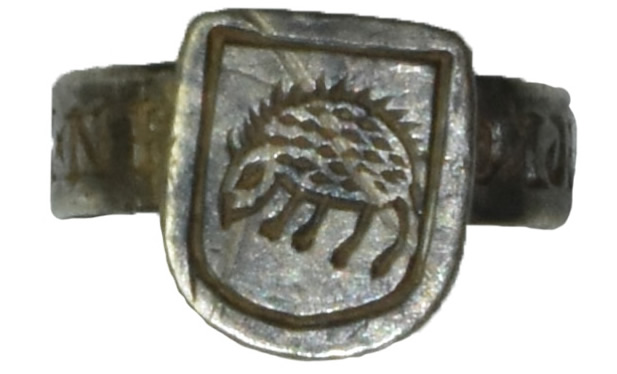Vervel from “The Land of the Hedgehog”
This vervel was recorded a couple of weeks ago at the PAS as GLO-F83E32. It’s one of those pieces that stirs an interest because of the unusual symbol and the possibility of identifying the owner. I thought I’d have a go.

The vervel has a hedgehog symbol and the inscription ” N x HereFORD x SHEERE”. It was found in Much Marcle, Herefordshire.
The inscription, find site and hedgehog symbol are three pieces of information that should lead us to the owner. Let’s look at each of these:
Inscription
As there is a clear inscription, that is a good place to start. This would normally provide a name and/or address, or a title so that the owner could be identified.
So what does “N x HEREFORD x SHEERE” mean. Seeing that somewhere else might lead to reading it as “North Herefordshire” but that is too vague and we’ll see later that it doesn’t fit geographically.
“Hereford” could be a surname but is an unlikely first name and so if it’s a name and address it is “N Hereford of Sheere”.
As a title it can be read as “N of Herefordshire” where N is the shortened form of the title.
Find site
The find site is Much Marcle, a few miles north of Ross-on-Wye in the southeast of Herefordshire. When I looked at the official tourism website for Herefordshire it refers to an annual hedgehog festival in Ross-on-Wye “the hedgehog, which is the symbol of Ross-on-Wye and to raise the profile of Ross-on-Wye as the Gateway to the ancient kingdom of Ergyng (AngloSaxon: Archenfield: Land of Hedgehogs).“1
The find site of a vervel has to be treated with a bit of caution. The bird may have decided to ignore the ever more frantic calls of its owner and fly off into the sunset, never to be seen again, ending up some distance away. However, a hedgehog symbol on a vervel found in the “Land of the hedgehog” seems to be lead worth following up.
“Land of the hedgehog”
The vervel was found in south-west Herefordshire a few miles away from the historic region of Archenfield, formerly Ergyng.
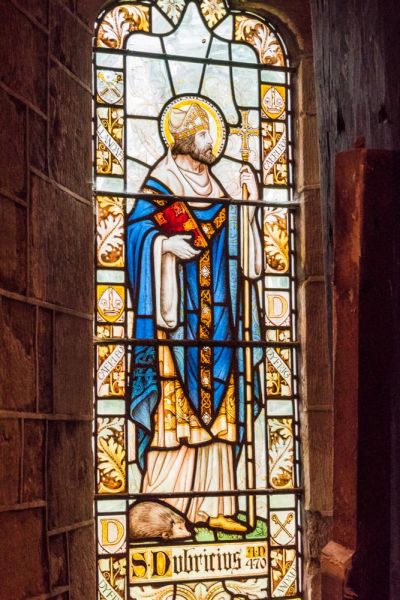
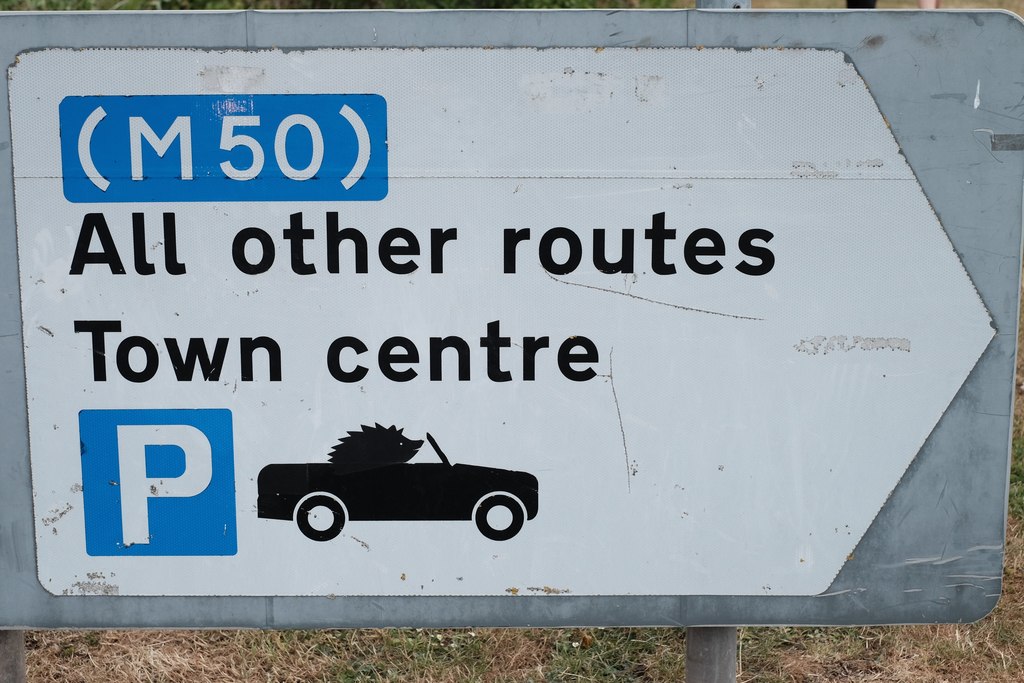
The hedgehog is the historic symbol for this area and is seen everywhere; on coats of arms, signs, stained glass windows etc. Many websites refer to it as the “Land of the Hedgehog”.
So why is this area “The Land of the Hedgehog”. The history of the area, Ergyng and later Archenfield, might shed some light on it.
Ergyng
Ergyng was a Welsh kingdom between the 5th and 7th centuries, shown here at the southeast corner of Wales.

Its spread is a little uncertain but it probably went into the modern Monmouthshire and east of the Wye. This included the old Roman town of Ariconium (about 3 miles east of Ross-on-Wye).
There are two competing theories as to how Ergyng got its name. One is that it is the Welsh name for Ariconium. 2 The other is that it is the Celt word for a hedgehog because the character of the inhabitants were likened to a hedgehog.
Archenfield
Ergyng became known as Archenfield although it was probably smaller in size.
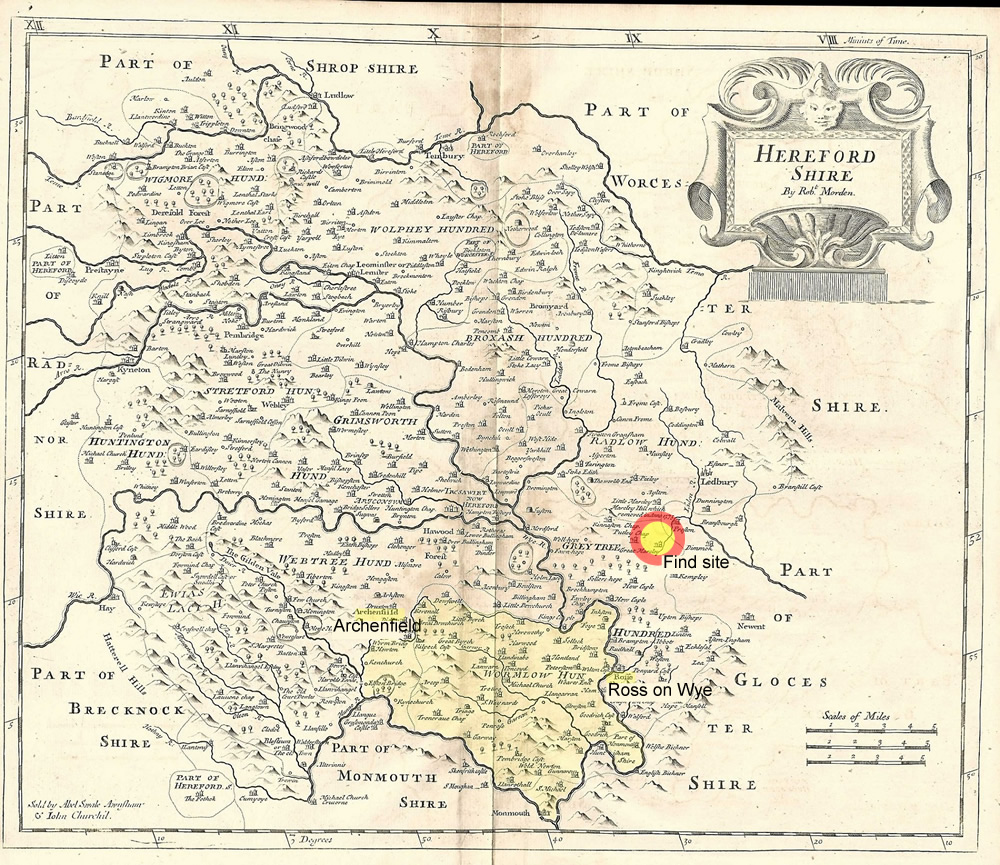
On this 18th century map, I’ve highlighted the region of Archenfield which is bounded by the river Wye to the east, river Monmow and Monmouthshire border to the southwest and river Worme to the northwest.
I’ve also highlighted Ross-on-Wye, which is now on the border of the modern Archenfield and the find site, a few miles to the north.
There continue to be two competing theories for the name of Archenfield. One is that it is anglicised form of Ergyng with the addition of “feld” to give “land of the Ergyngers”. 2
However, the much more popular theory, which is repeated widely on the internet, is the idea that the inhabitants were known as hedgehogs and Archenfield means “Field of hedgehogs”. The historic word for a hedgehog is urchin3 (the heraldic term is urcheon) and the theory goes that Archen is just a version of this. This theory goes that the people of Archenfield earned their hedgehog name due to their “fierce independence and spikey nature“.4
Alfred Watkins
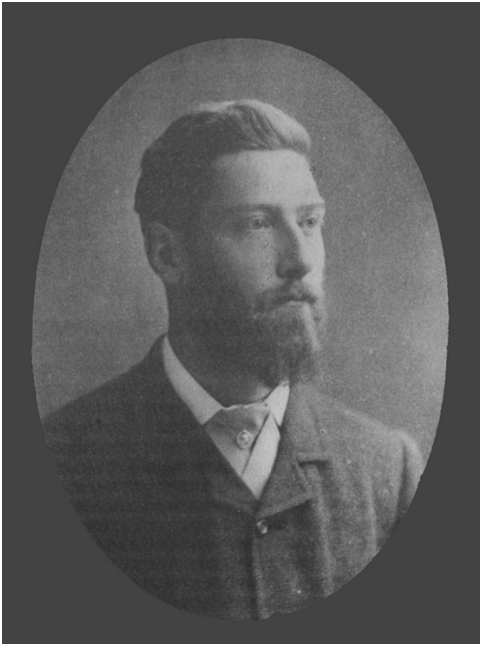
Alfred Watkins, a keen antiquarian, wrote one of the more thoughtful pieces of research on this theme in a book of press cuttings compiled from 1922 – 1925. He lists various instances of Archenfield in documents from the years 915 to1679, including Ircingafelda, Urchenefeld and Irchinfield and concludes “how can it be doubted that it was hedgehog-field’ all down the Middle Ages” 5 Alfred was a very interesting man with interests in photography and archaeology.6 More from Alfred later.
The consensus amongst the academic papers I have seen is that the name comes from the Roman town. If so, where does “Land of the hedgehogs” come from. A look at the region’s history may provide a clue:
History of Archenfield
Although now part of England, Archenfield is “both a geographically and culturally distinctive region, as it remained Celtic in character until the twelfth century, and the vast majority of its place names are Welsh“ 7 It was a semi-autonomous Welsh district effectively acting as a buffer zone between the Welsh and the English. It was allowed to keep it’s own customs and practices in return for providing a barrier between the parties and is offered as an explanation as why Offa’s dyke does not continue into the area.8
A document from the late tenth century entitled Ordinance Concerning the Dunsaete survives and appears to refer to Archenfield. It provides detailed regulations for dealings between the English and the Welsh both for trade and settling disputes. It gives a sense of a cordial relationship.9 After the Norman conquest, Arcenfelde (as it was recorded in the Domesday book) continued to be treated as a separate entity; not part of Wales or England.
Some certainty to the border area was provided by the Laws in Wales Acts of 1535 and 1542. However, it ignored any ethnic and linguistic considerations and simply bundled Archenfield into Herefordshire, as the Hundred of Wormelow.
My theory on the name
If you accept that Archenfield got its name from the Roman town of Ariconium how do you square Alfred Watkin’s point that “Archen” looks like, and possibly more important, sounds like “Urchin”. For me, the only explanation is that the derivation is the other way round. It’s not been named “Archenfield” because the inhabitants were known as hedgehogs, they are know as hedgehogs because the place name sounds like “hedgehog field”. So, it was effectively a nickname for the area and inhabitants. One reason it stuck was because a couple of leading families adopted the hedgehog on their coat of arms. And, as we’ll see, one of them in particular built many public buildings in Ross-on-Wye, each probably carrying his crest, the hedgehog.
Possible owners of the vervel
Therefore, the hedgehog on the vervel suggests the owner has a strong connection with Archenfield and will probably have a hedgehog into their coat of arms. The PAS record suggests two families from the area with hedgehogs on their coat of arms; the Kyrle and Abrahall families.
Kyrle family
The Kyrle family were a significant family in Herefordshire dating back to the 14th century and provide several candidates. The family had properties in and around Ross-on-Wye and the name can be seen around the town, principally due to John Kyrle, the “Man of Ross”. However, In a footnote to the entry on the Kyrle’s lineage, John Burke writes “There were many families in various parts of England, in the middle of the sixteenth century possessing names and arms, each nearly approaching those of Kyrle, who were probably connected with this family“10
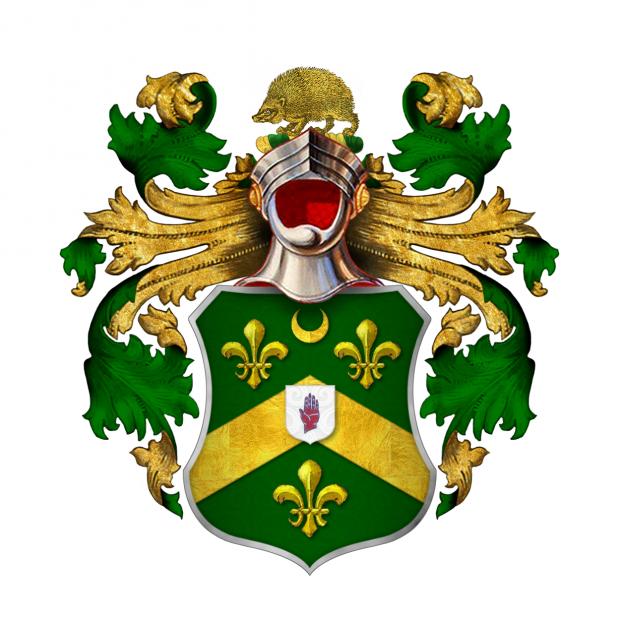
The Kyrle name was previously spelt with variations of Crull (a common name among the Norman aristocracy11 ) and later Curl. The Kyrles of Herefordshire can be traced back to a Robert Crul in 1295 who lived at Homme (now Hom Green), a couple of mile southeast of Ross-on-Wye. A couple of centuries later a James Kyrle inherits Walford Court, about a mile away from Hom Green.10
Kyrle motto – Nil Moror Ictus
I have seen the Kyrle’s motto, Nil Moror Ictus translated as both “I delay not when struck” or variations of “I heed not blows“. In looking for a translation, I stumbled across this curious image.
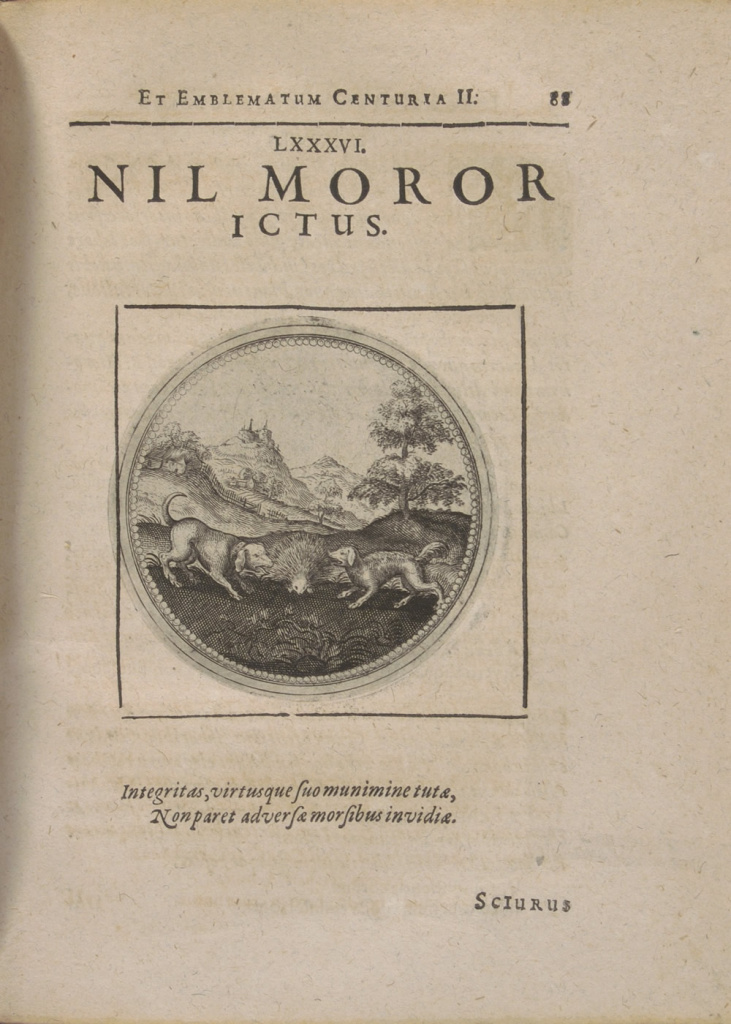
This page from Emblematum Centuria from the 16th century is headed “Nil Moror Ictus“. Below is an image of a hedgehog defending itself from an attack by two dogs.
Below that reads: “Integritas virtusque suo munimine tuta, Non patet adversæ morsibus invidiæ” which translates as “Virtue and integrity are their own fence, Care not for envy or what comes from thence.”
The sense of the motto and the image give the hedgehog a quality that would be attractive to have as a symbol and on your coat of arms. It gives support to my idea that the inhabitants of Archenfield were happy to be called hedgehogs and why the Kyrles and Abrahalls adopted it.
Abrahall connection
Back to James Kyrle. His son Thomas Kyrle (born 1500) marries Johan Abrahall (born 1520), the sole heir of Hugh Abrahall.
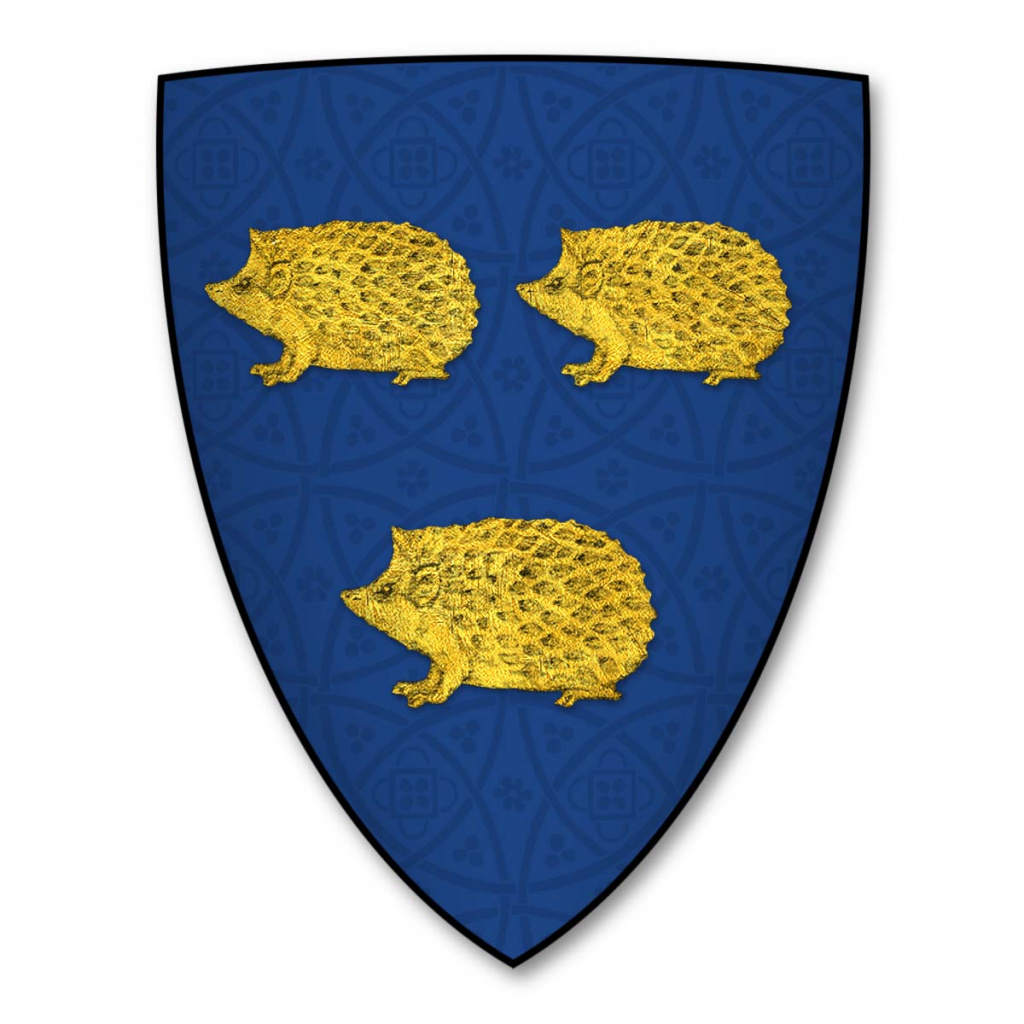
The Abrahall family have three hedgehogs on their coat of arms and their motto was “Qui me tanget poenitebit” which translate to “He who touches me beware‘
Marcle Manor – the find site
Thomas and Johan have thirteen children; nine sons and four daughters. In 1574, one of their sons, another Thomas, acquires Marcle Manor (later to become Homme House) in Much Marcle and becomes Lord of the Manor of Much Marcle. It has been passed down through various links within the same family to this day. 12 The find site could well be in the extensive grounds that originally came with Marcle Manor. Therefore, Thomas Kyrle and his decedents look like prime candidates.
Dates
Falconry enjoyed great popularity among the Tudors and Stuarts, with nobility and gentry, before declining towards the end of the 17th century. The PAS record dates the vervel to 1530 – 1560; I think it could be later.
With that in mind, here are some potential owners:
Thomas Kyrle (1539 – 1577), 1st Lord of the Manor of Much Marcle
Thomas was a lawyer and a moneylender. As well as the manor of Much Marcle, he owned the manor of Moor Court and property in Walford. He was MP for Chichester in 1571 and recommended for the Privy Council by the bishop of Hereford. By 1574 he was on the commission for Herefordshire.13
Sir John Kyrle ( 1568 – 1650) 1st baronet of Much Marcle
Thomas’s son, John served twice as High Sheriff of Herefordshire, in 1609 and 1628, and was created a baronet in 1627.
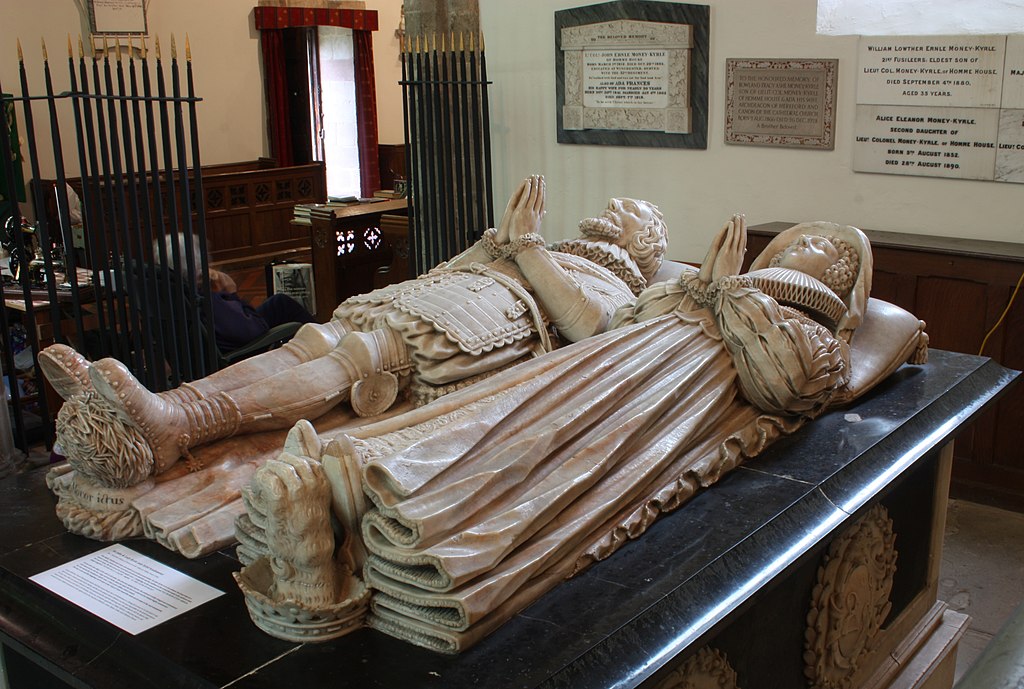
His tomb is in St Bartholomew’s church, Much Marcle. Have a close look at his feet; they are resting on a hedgehog. His motto “Nil Moror ictus” is placed underneath the hedgehog.
Fireback of Sir John Kyrle
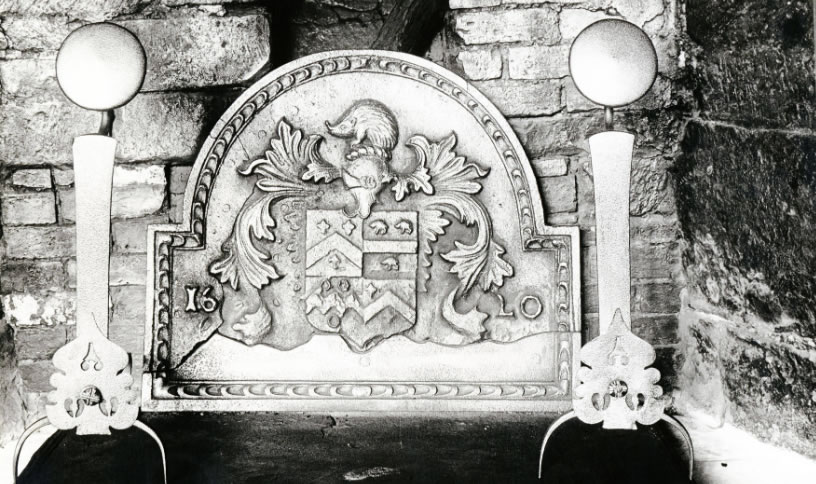
Alfred Watkins (1855 – 1935), who we met earlier, was a pioneer photographer. He took this photograph at the turn of last century. It’s Sir John Kyrle’s fireback, dating to 1620, at Fawley Manor (where John died, aged 82).
It depicts the arms of Kyrle, with a hedgehog crest, quartered with Abrahall, with its three hedgehogs (the horizontal bar or “fess” seems a mistake) and Warnecombe (John’s uncle, Walter had married Joan Warnecombe).
Walter Kyrle (1600 – 1650)
He was an English lawyer and MP for Leominster from 1640 – 1648.
Sir John Kyrle 2nd baronet of Much Marcle (1617 – 1680)
Grandson of the 1st baronet. He was proposed as a knight of the shire although there is some doubt as to whether he acquired the title.13
John Kyrle, “Man of Ross” (1637 – 1724)
Son of Walter Kyrle, he was known as “the Man of Ross” due to his philanthropy. Given his reputation for having a frugal lifestyle from an early age15 he is an unlikely candidate for the owner of the vervel.
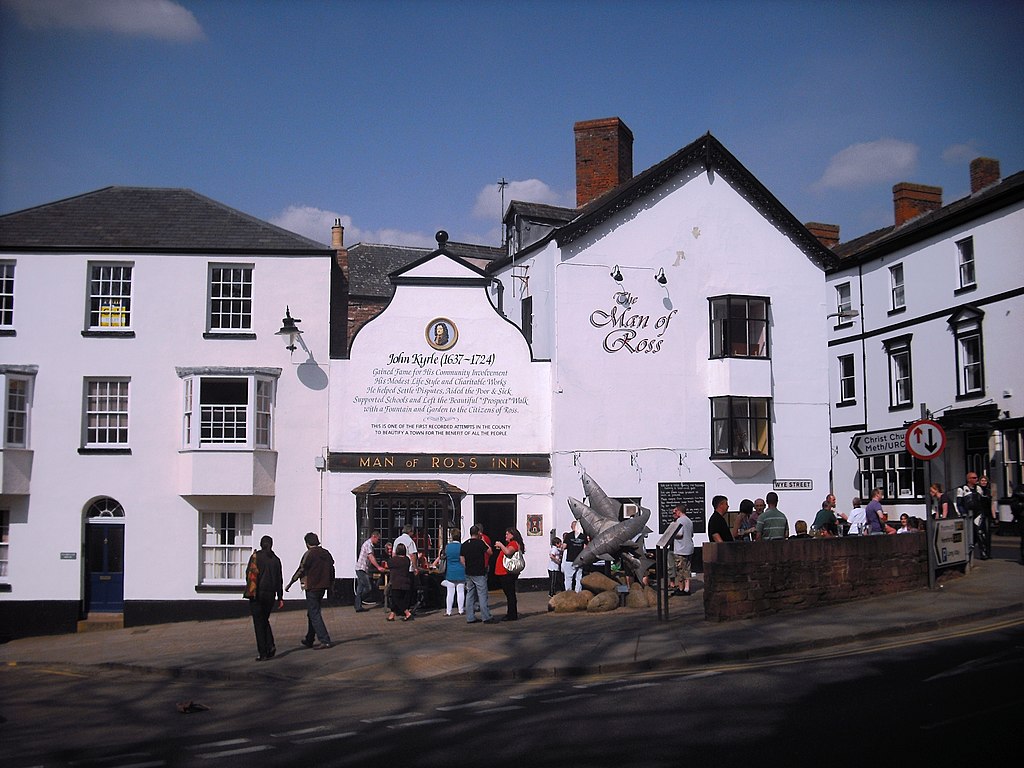
There are numerous things named after John Kyrle including halls, streets and a church.
Perhaps most importantly, he has a pub named after him with a wall hosting a picture and tribute to him.
A very interesting man but probably not our man. However, he does provide something pertinent to the search; he donated a silver tankard to Balliol College, where he studied. “It weighed upwards of five pounds, and the cover was lifted up by his crest, a hedgehog“ 16 . This shows that he used the hedgehog crest and because he built so many public buildings, the hedgehog would have been seen in many places around Ross.
Roger Hereford (1595 – ?)
Remembering that the inscription could be interpreted as “N Hereford of Sheere” I thought I might be on to something when I found that a Roger Hereford had married into the Kyrle family in 1620. He and his wife, Penelope, had 12 children but none of their names began with an “N”. Also I was struggling to fit “Sheere” to a place name.
Conclusion
Given the find site and the Kyrles strong association with the hedgehog, the suggestion that one of them is the owner is very plausible. A few of them held a title which was “something of Herefordshire”. This fits with the idea of the inscription on the vervel representing the title “N of Herefordshire”. However, what the “N” stands for is not clear, and that is probably the key to solving this mystery.
As always, any suggestions or comments are very welcome.
Update
Kev Woodward to say “Just been reading your piece on the ‘Hedgehog’ vervel. I think it may have the crest shield fixed partly over the word ‘IN’ or ‘ON’ which would account for the ‘N’ only.“
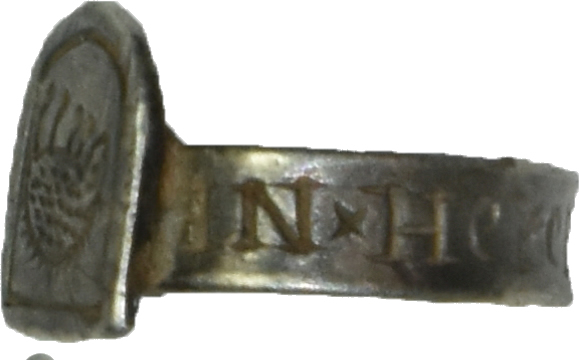
The photograph on the PAS isn’t conclusive but I think Kev’s suggestion would make sense; more sense than I have found for the “N” on its own.
The ring would then read “[Hedgehog symbol] in Herefordshire”. For that to identify the owner, it must belong to the leading family in the county using that device, which is the Kyrle family.
References
- Ross-on-Wye Hedgehog Festival, Eat Sleep Live Herefordshire
- Wikipedia – Ergyng
- Wikipedia – Hedgehog
- Ross-on-Wye in Herefordshire a market town in an Area of Outstanding Natural Beauty
- Archenfield: origin of name, Alfred Watkins 1922-1925
- Alfred Watkins: A Herefordshire Man by Ron Shoesmith 1990
- Archenfield: Continuity and Change in an Early Medieval Border Landscape, Eddie Procter, December 2003
- The Welsh Border: Archaeology, History and Landscape, T Rowley 2001
- The “Ordinance concerning the Dunsæte” and the Anglo-Welsh frontier in the late tenth and eleventh centuries, George Molyneaux, 2012
- Family Names and Their Story, Page 354 by Sabine Baring-Gould, 1910
- A Genealogical and Heraldic History of the Commoners of Great Britain and Ireland, Enjoying Territorial Possessions Or High Official Rank: But Uninvested with Heritable Honours, page 615, by John Burke, 1836
- https://hommehouse.co.uk/history/
- The History of Parliament, KYRLE, Thomas of Much Marcle
- The History of Parliament, KYRLE, Sir John 2nd Bt of Much Marcle
- Wikipedia – John Kyrle
- J. B Whitbone writing in A MEDIUM OF INTER-COMMUNICATION FOR LITERARY MEN, ARTISTS, ANTIQUARIES, GENEALOGISTS, ETC, 1852

